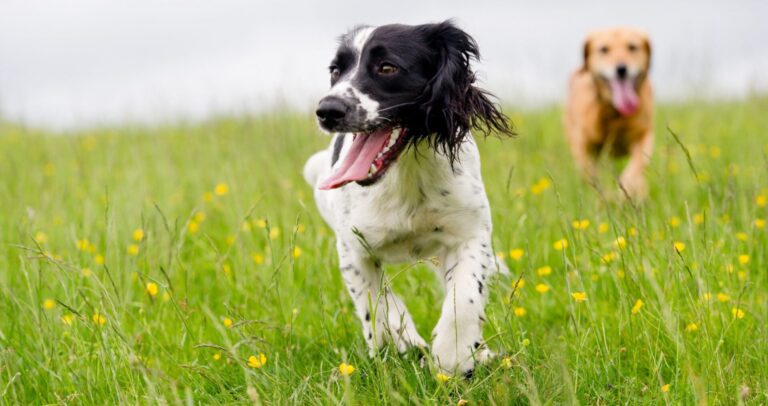Whistle Training
Thoughts of dog whistles often conjure up images of One Man and his Dog; a grizzled shepherd blowing away on a mouth whistle to demonstrate an almost telepathic level of communication with their Border Collies. For others, dog whistles are all a bit serious and only for the tweed-clad country types, shotgun optional, or the Barbara Woodhouse, Crufts-eques dog ‘handlers’. However, dog whistles are a truly fantastic tool that can transform recall.
A whistle is the ultimate recall tool, but different whistles are best suited to different situations; please read my blog post choosing the right whistle for your dog to help pick the best one for you.
In this blog post, I will explore 5 reasons you should try whistle training with your dog.
1. It’s a unique sound that means come back.
When we train dogs anything we use cues. Cues are words or sounds (or even hand signals) that we link to a behaviour; sit means put your bottom on the ground. The dog learns that when they hear the cue “sit”, if they put their bottom on the ground, they get a reward. Your dog what the sound of the word ‘sit’ means. However, when we want our dogs to come back to us we say “here, Rover, come, Rover here, come on, Rooover, lets go, I’m leaving now” etc. it all gets very confusing for our dogs. Then add in different voices, tones; it is no wonder they can get confused, there could easily be twenty or more variations of the recall cue. A whistle makes a sound, that is totally consistent no matter who blows it, which means come back; your dog can learn this in minutes.
2. It’s easier to reinforce
It is human nature to use our dogs name as our ‘cue’ for when we want them to come to us. However, we all tend to massively overuse our dog’s names. Sometime your dog will hear their name and then something good happens (Rover, walkies), but sometimes a name gets attached to something bad (Rover, get down, bad dog). This means that Rover can never be sure if hearing his name is a good or a bad thing. When we want Rover to come back first time 100% of the time, we need a cue that is always connected to something good. Every time a cue to linked to a behaviour that is linked to a reward (cue->come back->good thing) the likelihood of our dog doing the same behaviour again when they hear the cue increases. It is much easier to only use a whistle when we want our dog to come to us and we are able to reward them for doing it.
3. It has no emotion
If we are frustrated, frightened, or angry, all of that emotion is carried in your voice and your dog hears that. Would you want to come back to someone shouting your name as loudly as possible, with a terrified tone because you are heading for the main road? We when blow a whistle it is totally emotionless, every recall is the same, the urgency is the same, whatever the circumstance and whoever blows it.
4. It carries further
We just need to be call louder and louder as our dog gets further and further away from us. As the volume of our voice increases the amount of emotion goes up too. Very few people have a voice that could carry anywhere near to the distance the peep of the (right) whistle can. The volume and reach of the whistle is so much more effective at cutting through the fog of the chase.
5. Other cues
Once a recall has been trained to the whistle, normally 3-5 short, rapid pips, there is a whole world of other cues that you can use your whistle for. It is common for one short pip to be a ‘stop’, a single long blast to be a ‘sit’ and 2 short pips to be a ‘look at me’. All of these can be trained using the same methods that a recall to the whistle is trained.
Is your dog still not coming back when asked? Have a look at my one to one training courses so we can work together and get your dog recalling every time.

